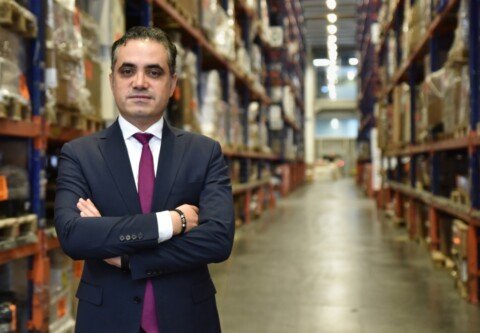The importance of a seamless end-to-end network when shipping highly-sensitive pharmaceuticals is a fact well known in the air cargo industry – and one that unites the members of cross-industry organisations is Pharma.Aero whose main objective is to drive real change. Their goal is to create a platform where all the stakeholders and the end customer can not only sit together and talk but actually innovate and drive projects around certain topics where everybody feels that there is a need. To realise this change, the group makes all-important information available to the industry as they bring studies, data and projects to its members, and the members can then take that into their daily practice. In an exclusive conversation, Frank van Gelder, Secretary General of Pharma.Aero, informs Upamanyu Borah, that they are a real content-driven organisation, and together with the use of data science, they are sharing the best practices and gearing up more than before as shipping huge volumes of COVID-19 vaccines is soon to become a reality for the industry.
Has there been any significant change in the way pharma is shipped since Pharma.Aero was set up?
Since its inception in 2016, Pharma.Aero has been active in developing different projects together with its partner members, both pharma shippers and operators in air freight pharmaceuticals. Many projects lead to different approaches and new insights in what we as an industry represent. Our association focusses on creating content for the industry and foster collaboration. Ever since, we have seen more industry collaboration and cooperation amongst airport communities. Two specific projects underlining this are the Brussels Airport and Hong Kong International Airport corridor project and the recent Sunrays project. When we bring different stakeholders together and make them collaborate, our voice as an industry is simply stronger.
Which airport developments have been the most influential, and how have they contributed to the growth of Pharma.Aero?
Our current membership includes airports representing each continent, including our board members. Each airport is bringing together local, regional and global perspectives, thereby strengthening the organisation. The collaboration with significant airport communities in Pharma.Aero projects, especially exchange of experiences and findings, enlarges the insights and helps to create synergies. This directly influences the growth of our association.
Many airports, airlines and forwarders are yet to join Aero.Pharma. Is there need for a new and stronger value proposition?
Pharma.Aero is not a marketing platform, to state this clearly. Our ambitions and goals are to walk-the-talk for the entire industry. We are growing our organisation in a pace that is mutually beneficial for ourselves as well as our members. Our members are invited to join projects and work commonly together for the benefit of the industry. Therefore, it is important to develop and balance quality content and membership in tandem.
Each country has slightly different interpretations of certain regulations and compliance, given their unique regulatory development path. Coming from a global international perspective what you see as some of the differences, the unique interpretations of compliance?
Despite the differing local regulations, Pharma.Aero is tied together and shares common objectives through the IATA CEIV Pharma standards. This allows our members to speak the same language and pursue common goals; practices and interpretations of compliance can be openly discussed and compared. One of the examples was the series of three webinars recently organised by Pharma.Aero on the acute, mid and long-term impact of the COVID 19 pandemic. We had the opportunity to compare different practices during the first impact of the pandemic. Based on certain feedback and practices, we were able to initiate a next ‘Project Sunrays’ together with TIACA on the COVID 19 vaccines readiness.
How do you influence the choice of airlines to look through some particular airports although there are many who have deployed the best practices and got the right infrastructure setup but not a member of Pharma.Aero?
First of all, we are not in the position to influence directly the choice of an airline to go for particular routings. The choice is driven by different factors, specifically when an airline is concentrating on pharmaceuticals, further enabled by the ability of both airports and operators to handle that type of air freight according to the requirements. Through our projects such as ‘Airside Benchmarking Study’ and ‘Airport Corridors’, we are providing insights to our members on potential gaps and how they could address them and develop the necessary framework to become airports of choice and forge quality air corridors. The idea of building a global air freight community platform is when operators and airports recognise themselves in the added value of ‘we as an organisation’. It is when they will associate them with our vision; they will become interested in our membership, and eventually, our projects.
Could you inform about some of your initiatives that aim to consolidate the tech side of the industry?
Sharing best practices and the technical possibilities available in our industry to support that, drives our association to also look at the latest developments related to the air freight life science and MEDtech industry. It will mainly be through certain projects that we will be able to deep dive into such new technologies. But especially having the pharma shippers with us in a very strategic position, drives our association to focus on the latest innovative technical developments. For instance, our projects Digi 1.0 and Digi 2.0 are good examples on how we are using cloud data-sharing platforms to create higher supply chain transparency.
Your recent airfreight readiness survey exposed the weak state of the industry to fly a potential COVID vaccine? Where do you see the problems mostly arising out of?
TIACA and Pharma.Aero have constituted a dedicated taskforce, composed of industry representatives and members of both associations for Project Sunrays, which aims to establish useful guidelines for the proper handling, storage, and transportation of huge volumes of COVID-19 vaccines once they are available.
As part of the work packages, we have rolled out a global air cargo readiness survey in September to understand our air cargo industry’s preparedness on the COVID-19 vaccines supply chain requirements, as well as their responses and strategies towards the challenge. There was a strong concern for the lack of readiness for COVID-19 vaccines logistics, especially with only 28% of the industry feeling well-informed and prepared back then.
The main cause was the list of unknowns and lack of information from the shippers. The more away the pharma shippers were in the operational activity chain, the less prepared the air freight providers felt.
Currently, we are establishing a second review of the preparedness of the industry, in which we will evaluate the progress of the state of preparedness by the industry in comparison with the first findings, since more information is now available. Subsequently, Project Sunrays will bring forward a few white papers for the industry with findings and recommendations we could generate along this project.
For a ‘smart ecosystem’ in global shipping to take form, it would require transparency among various players and data-sharing between competitors. How do you think air cargo can tackle the issue of trust?
Pharma.Aero created the basis for a multilayer holistic model, sharing data of different operators and sources as overview of the air freight supply chain, through projects Digi 1.0 and DIGI 2.0. From a conceptual business idea, we moved to a prototyping model, resulting in what became the Global Pharma Tracker (GPT). We learned two important things:
- Technology is just the enabler.
- There needs to be sharing of common objectives and top-down buy in. Strong data governance would help to set the stage.
Today, through the pandemic situation, the airfreight industry is more important than ever before. As an industry, if we show that we are able to collaborate and share crucial information where needed, we have the unique opportunity to gain the necessary trust of customers. To have a strong network of sharing and collaborating together has become a must-to-have. The role of pharma shippers is pivotal, especially their request to collaborate as an industry will help us to provide them the necessary operational insights through sharing data and collaboration.
What permanent changes do you expect to see in the air cargo sector in a post-pandemic world?
The disruption this pandemic caused will definitely reshape the air freight industry landscape and the entire way the industry works. I think, we might see a strong acceleration of the digitalisation process, and this would be for two main reasons:
- To work within an industry heavily depending still on paper works and physical handover moments is just not feasible and outdated.
- The need for end-to-end visibility and the ability to provide real-time information is more imperative than ever, especially so with the COVID-19 vaccines distribution, both quality wise as well as from the viewpoint of securing this high-value shipment.
What is the measure of vision during your term as Secretary General of Pharma.Aero?
In my position and term as Secretary General of Pharma.Aero, my vision underlines the need for an ongoing and increased collaboration between the different operators and players of the life science and MEDtech air freight industry.
Together with the Board of Directors, aligned and motivated to lead our association, our vision is to keep a healthy balance between growth in members and, at the same time, creating valuable content for the industry through different projects. For me, the relevance of the projects we present as an organisation is of major focus.
A more intensified engagement of members is needed in what we do and represent. At the end of the day, we are supposed to represent in a neutral way, the voice of the industry through our members and their insights. The fact that we can orchestrate their collaboration enlarges the impact of what we do.







